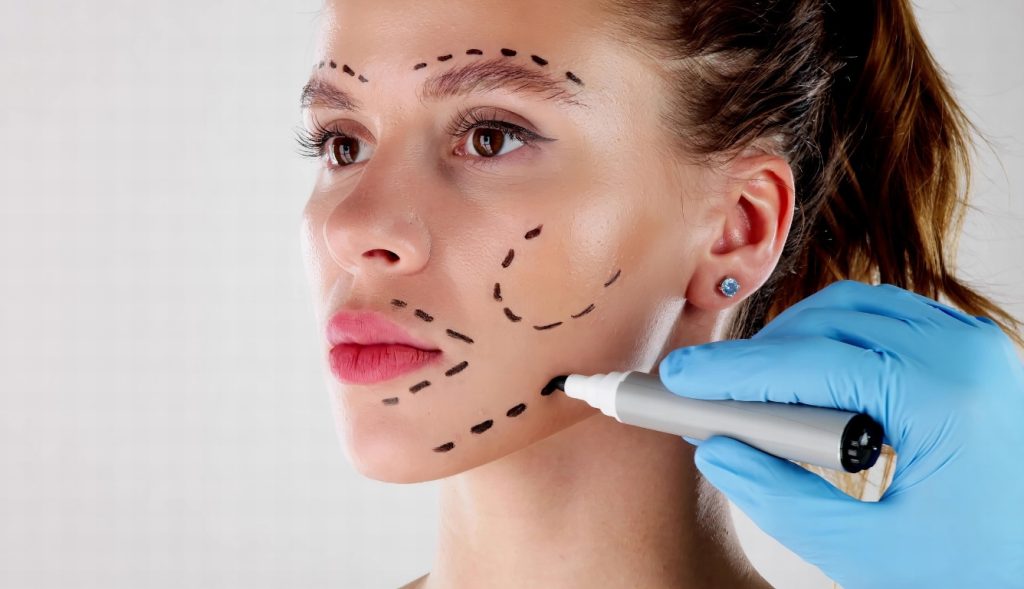Changes Over Time
With age, the skin’s elastic fibers loosen, leading to sagging, wrinkles, and volume loss in the face and neck area. Sometimes, the image we see in the mirror doesn’t reflect the energy and vitality we feel. A facelift aims to erase the traces of this natural process, helping a person feel more vibrant and dynamic.
What Is a Facelift?
Medically known as “rhytidectomy,” a facelift involves tightening loosened tissues in the face and neck, removing excess skin, and reshaping facial contours. The goal is to restore a younger, more balanced, and refreshed appearance while preserving the face’s natural structure.
Who Is It Suitable For?
It is generally suitable for individuals over the age of 40 who have noticeable sagging in the cheeks and jawline, looseness in the neck area, deep wrinkles, or deterioration in facial contours. Ideal candidates are in good general health, have limited or no smoking habits, and maintain realistic expectations.
Pre-Surgery Preparation
Before the operation, a detailed facial analysis is performed and the patient’s medical history is reviewed. Blood-thinning medications and certain herbal supplements are usually stopped 1–2 weeks prior to surgery. Since smoking negatively affects healing, it is recommended to quit entirely if possible. The surgeon creates a personalized surgical plan based on the patient’s needs. Diabetes is not a barrier to facelift surgery; however, blood sugar levels should be well-controlled and the HbA1c (checked every three months) should not be high.
How Is a Facelift Performed?
The procedure is performed under general anesthesia and takes an average of 3–5 hours. Fine incisions are made along the front of the ear and within the hairline. The skin is carefully separated from the underlying muscle and connective tissue. The deep tissue layer, known as the SMAS, is reshaped and lifted. After removing excess skin, the incisions are closed with aesthetic sutures.
Recovery Process
In the first few days after surgery, mild tightness, swelling, and bruising are normal. In most patients, these symptoms significantly decrease within 1–2 weeks. The average return to daily life is 10–14 days, while the final results may take several months to fully settle. During recovery, it is important to protect the skin from the sun and follow the surgeon’s recommended care protocols.
Will I Look Natural? Will My Expression Change?
The aim of a facelift in experienced hands is not to turn the face into “someone else” but to refresh the existing natural beauty. Facial expressions are preserved, and the overall look remains natural—just younger and more rested.
How Long Do Facelift Results Last?
Results generally last 8–10 years. Genetics, lifestyle, skincare, and sun protection habits directly influence this duration. Regular skincare, a balanced diet, and avoiding smoking help maintain results for many years.
Facelift Prices in Turkey & Reasons for Preference
Price
Varies depending on the surgical technique, hospital, and surgeon; the exact figure is determined after an examination.
Why Choose Turkey?
- Affordable prices and high-quality service
- Experienced, certified surgeons
- Package services including accommodation, transfers, and translation
- Tourist attractions and experiences
- Easy accessibility
Frequently Asked Questions (FAQ)
- Will there be scars?
Incisions are hidden within the hairline and around the ears, so scars are generally unnoticeable. - Will my face look artificial or overly tight?
With the correct technique, an excessively tight, “mask-like” look does not occur. - Are there alternative methods?
Non-surgical options such as thread lifts, fillers, and botulinum toxin applications are available; however, their effects are temporary and limited. - Facelift or thread lift—which should I choose?
Thread lifts may be considered for mild sagging; for advanced laxity, surgical facelift provides longer-lasting and more pronounced results.


